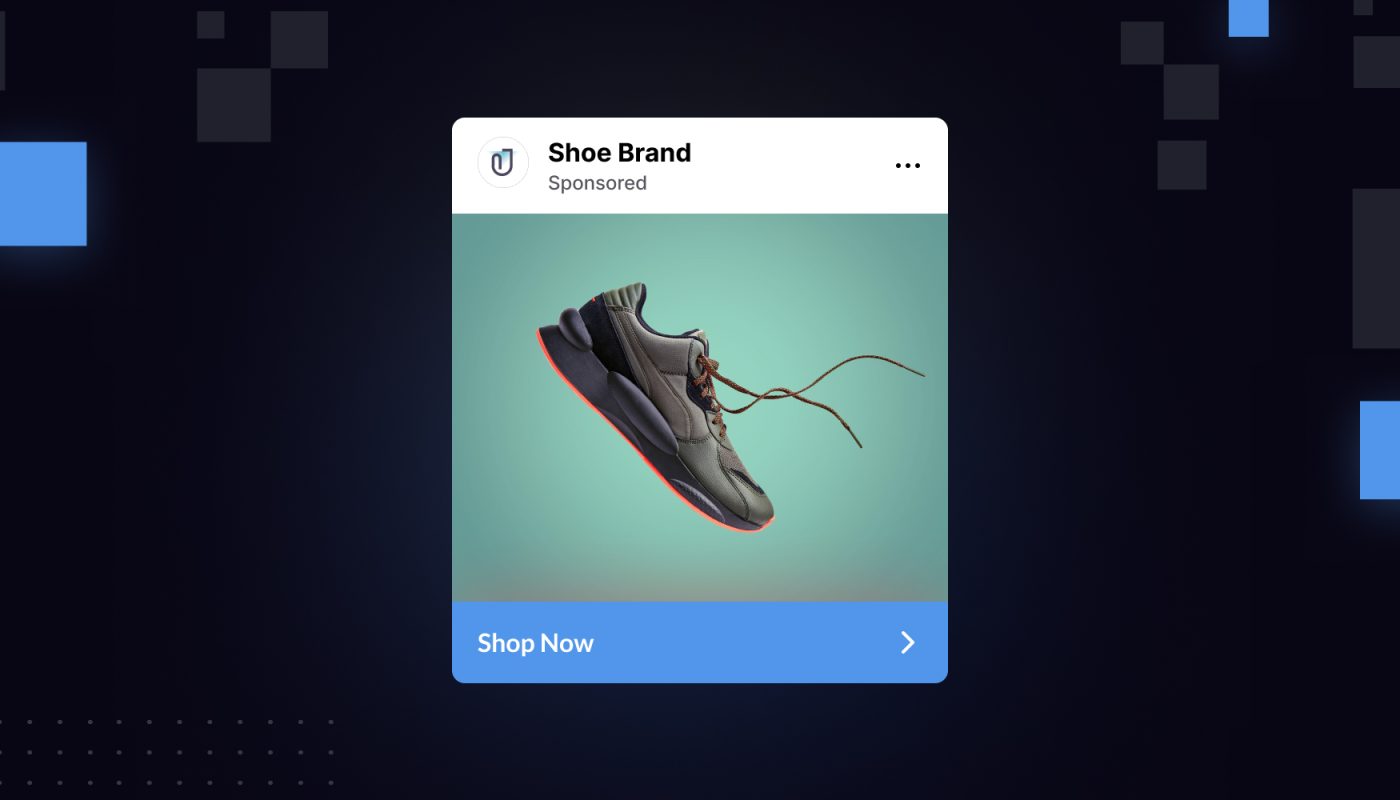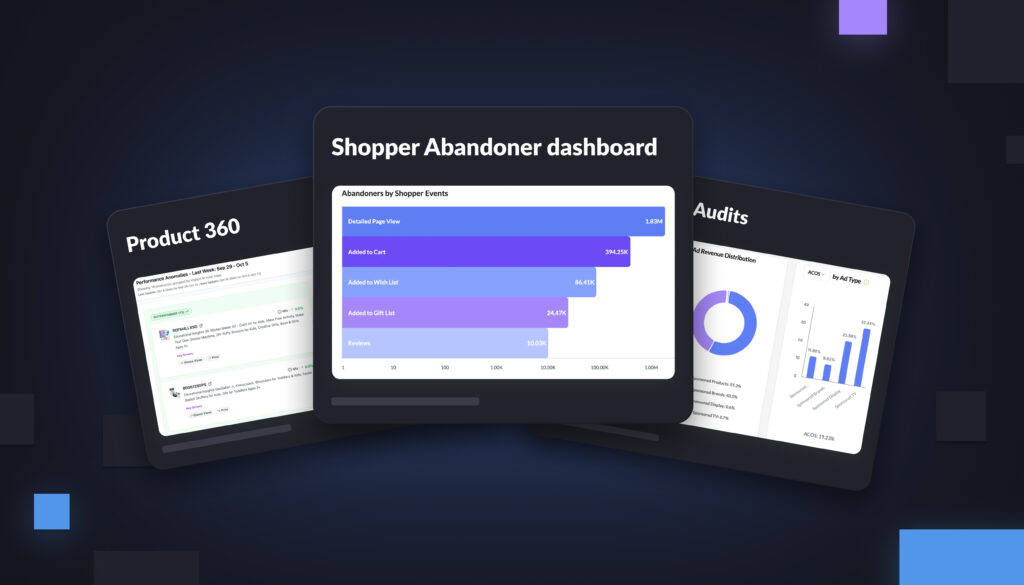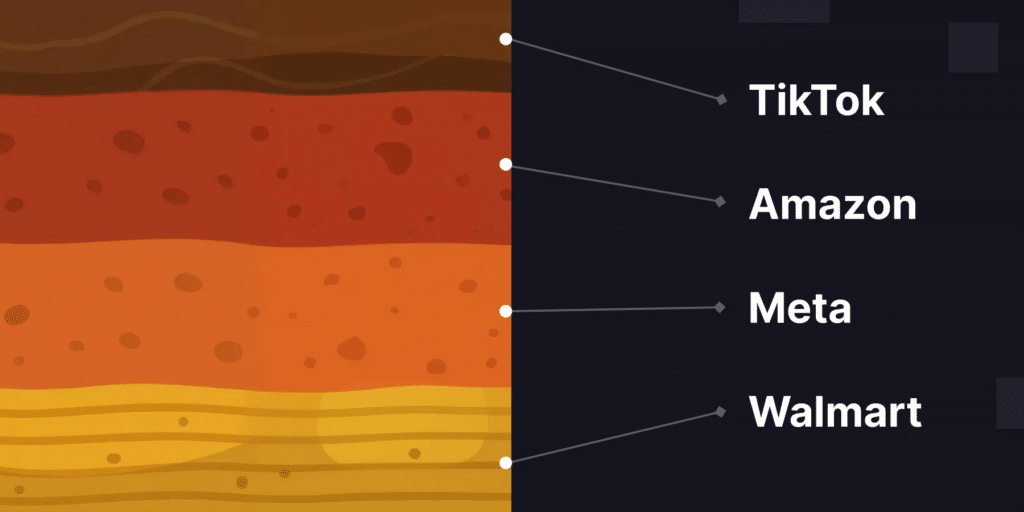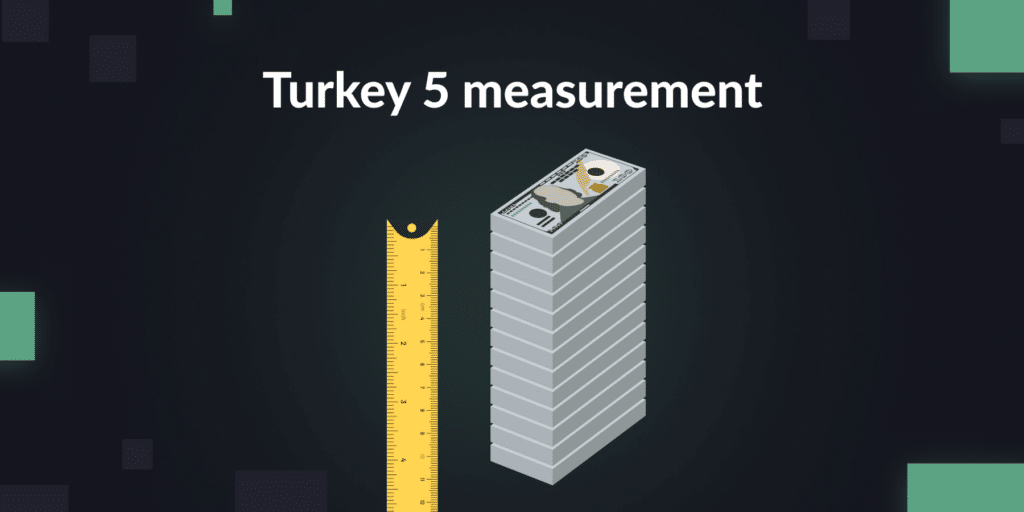It’s no secret that costs per click are going up across nearly all e-commerce sites. When someone searches for a keyword related to your product, winning the auction is pricier than ever.
Many brands are understandably thinking about how social channels like Instagram, Facebook, TikTok, and more should fit into their ad mix.
Social ads can be a cheaper way to get shoppers to your product pages. Plus, referring that external traffic might give you added benefits in your organic ranking on a site like Amazon.
The question then becomes: Where do you send all of your social traffic? When you run an ad on Instagram or TikTok, do you direct shoppers to your DTC site? To Amazon? To Walmart? To an in-app store, like TikTok Shop?
It’s not an easy question to answer—but we’ll walk you through how to parse through it.
Should you refer social media ads to Amazon?
Let’s start with the place where most of your business is happening anyway: Amazon.
Is it really worth it to direct social ads back to your Amazon listing? It’s more than understandable why most brands would be hesitant. You don’t retain as much data on your shoppers when they buy from you on Amazon than when they visit your DTC site.
But some brands and agencies believe that bringing external traffic to Amazon nudges up your organic ranking. If that’s true, you can get a boost from the flywheel, and a lot more sales might result.
The pros: Some agencies say that Amazon places products higher in its organic rankings when they receive a lot of off-site traffic. So if you can get a bunch of people from Instagram to click and buy from you on Amazon, the boost to your organic ranking could be significant.
Plus, Amazon pays you extra if you’re able to drive these offsite conversions. Amazon currently offers a Brand Referral Bonus, where you get 10% of the sale for every external shopper that eventually converts on Amazon.
The cons: There are many challenges to running a social-to-Amazon strategy. For instance, to succeed, you need to ensure the external visitors have a high conversion rate.
If you have a poorly targeted ad on Facebook, it could harm your overall conversion rate on Amazon. Say you send thousands of external customers to your Amazon listings, but almost everyone immediately bounces as soon as they land on your page.
If your conversion rate drops overall, Amazon will cause your product to appear lower in the search results.
You have to be cautious:
- Make sure your ads are well targeted. Don’t direct shoppers back to your Amazon page if you’re running a very broad awareness campaign. When running social ads, you should prioritize more finely targeted shopper groups.
- Make sure your ads come from high-converting channels. If there’s a significant difference between how well each channel converts, e.g. Instagram vs. TikTok, make sure you’re picking the high-converting channels to refer back to Amazon.
Ensuring a good conversion rate is one overarching challenge. Other, more structural roadblocks to a social-to-Amazon campaign might involve limited experience with social ads channels, limited budget for non-Amazon ads, overloaded creative resources, and so on.
How do you track social ad performance?
The big question that every brand has is how ads differ from social channel to social channel. How do your TikTok ads convert compared to your Instagram ads, for example?
And where should you send those ads? Is there a significant difference in conversion rate between Amazon and Shopify?
While this type of measurement is difficult—and often buggy—there are some options out there. As Spencer Padway of Search Nurture discussed in our recent webinar, there is a way to get this done.
Here’s a quick rundown of a few attribution options that are available to you:
Shopify. Shopify offers direct integrations with Facebook, TikTok, and Instagram ads, such as through the Facebook Pixel and TikTok Pixel. You can very easily see which social channels are driving shoppers to your website, and then how many of them end up purchasing from you later.
Amazon. Amazon offers a feature called Amazon Attribution, which uses tags to track all external traffic you refer to your product page. Amazon Attribution tells you which channels are driving the most traffic, and how many of those shoppers are later converting.
(Intentwise also has a direct integration with Amazon Attribution, so you can manage this data more easily in our platform.)
Home Depot. Home Depot has a platform for measuring offsite traffic, too. It’s called Home Depot Vantage+. The only trick of Vantage+ is you have to run your external Facebook and Instagram ads through Home Depot’s own platform to see this data. Your social ads are directly integrated ahead of time.
So what can these attribution tools actually tell you? If you track your conversion rates across third-party marketplaces, you’ll be able to see what your shoppers do once they land on your DTC site or on your Home Depot product page.
Which drives more conversions? And is there a significant difference in conversion rate based on the channel from which they originated?
Of course, it’s important to remember that this is not a foolproof process. There’s a good chance these attribution tools are not capturing everything. Keep in mind:
- Amazon Attribution involves adding tags to your URLs, yet Meta and TikTok have been known to strip the tags from Amazon Attribution URLs.
- A link click in TikTok might not always direct users right to the Amazon app. An Amazon link might instead open inside TikTok’s app. So Amazon can’t track these users as well.
Which social ads have the highest conversion rate?
Right now, we have a few glimpses of industry-wide data about conversion rates on social channels. In 2022, the firm MikMak released a report on the success of different shopping ads.
MikMak counted a “conversion” as a click to view the product or as an add to cart. The report found that Instagram ads had a conversion rate of 18%, Facebook ads had a conversion rate of about 9%, and TikTok ads clocked in at 2.3%.
But that was in 2022, before TikTok Shop. The data has likely shifted since.
Last year, Amazon also released a report based on Amazon Attribution about how different types of external visitors perform once they reach the platform.
According to Amazon’s data, by far, email was the referral source with the highest conversion rate. Email had more than double the referral rate of some other types of incoming traffic.
Whereas the conversion rate for social media was slightly less than 2%, the conversion rate from email traffic was nearly 5%. Here’s the full chart:

The report also revealed that sending offsite traffic back to Amazon has broad benefits for your whole brand—not just the product you advertised. External advertising traffic increases sales for non-advertised products by 24.5%.
In other words, on average, for every four customers who convert from off-Amazon ads, at least one of them will buy an additional non-advertised product from your brand. That means they help to grow brand halo sales in a significant way.
But the report doesn’t break out how different social media sites compare in their conversion rate. Does TikTok convert better than Instagram? It probably depends on your specific situation.
That’s where you come in. Next time you’re wondering where to direct your social traffic, remember, you can figure this out by tracking this data. Start using tools like Amazon Attribution and Home Depot Vantage+, and test sending your social media traffic to a bunch of different sites.
It’s only after testing and learning that you’ll know which channel is converting the best for you—and which combination of social platform and shopping site drives the most sales.
Newsletter links:
What are the limitations of tracking a shopper journey on Amazon, and how does Amazon Marketing Cloud get around it? Our CEO Sreenath Reddy broke it down in his latest LinkedIn video this week.
Amazon had another big quarter in advertising, driven by the addition of ads to Prime Video. eMarketer estimates that about 80% of Prime Video subscribers are on the ad-supported tier.
What is the difference between FBA Export, Remote Fulfillment, and Global Selling? We explained everything you need to know about reaching international shoppers on Amazon in our blog.




